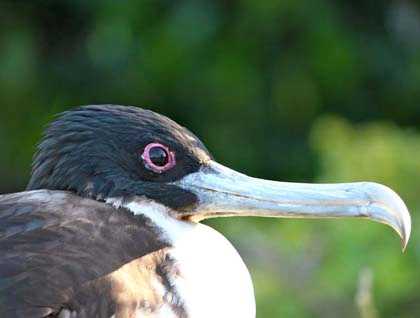Today we started our day anchored in the caldera of Genovesa Island known as Darwin’s Bay, after the archipelago’s most prominent visitor, Charles Darwin. After breakfast, on our way to the disembarkation area on the beach of Darwin’s Bay, we found the sky covered with birds. That’s how the island got the name, Seabird Island. After landing on a beach covered with small pieces of broken coral we started our short hike. The place was absolutely beautiful. It was filled with different species of seabirds such as frigatebirds, swallow-tailed gulls, Nazca and red-footed boobies, and many night-crowned herons. It was an indescribable experience. Later on we headed back to the Islander to get ready for our next morning activity: snorkeling in the inner rim of the caldera. In the water all of our guests were impressed by the diversity of fish we found there. We spotted parrotfish, Moorish idols, damselfish, among many more. The water temperature (76 F) was the warmest of the week and visibility was about 30 feet. It was a very relaxing way to say goodbye to the marine environment of the Galápagos.
In the afternoon we visited the Prince Phillip’s Steps visitors’ site. There we found a dramatic landscape created by old lava flows covered with many species of seabirds. During our hike we learned how ecological niches are occupied by organisms that are not endemic to the archipelago. A good example is the short-eared owls that took the position of the diurnal predator on Genovesa, preying on the abundant storm petrels that nest on this Island. We spotted several of owls. It’s incredible the way time flies when you are surrounded by nature and having fun in good company. It was another great week in paradise.







